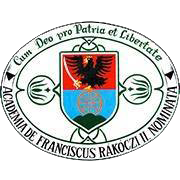Please use this identifier to cite or link to this item:
https://dspace.kmf.uz.ua/jspui/handle/123456789/1309| Title: | Demográfiai változások Kárpátalján az 1989-es és a 2001-es népszámlálás között |
| Other Titles: | Демографічні зміни на Закарпатті між переписами населення 1989-го та 2001-го років |
| Authors: | Fodor Gyula Фодор Дюло |
| Keywords: | demography;Transcarpathia;population structure;demográfia;Kárpátalja;népszámlálás |
| Issue Date: | 2004 |
| Publisher: | Kossuth Egyetemi Kiadó |
| Type: | dc.type.otherconferenceAnnouncement |
| Citation: | In Süli-Zakar István (szerk.): Határon átnyúló kapcsolatok, humán erőforrások. Nemzetközi tudományos konferencia (2003. november 10-11.). Debrecen, Kossuth Egyetemi Kiadó, 2004. pp. 347-354. |
| Abstract: | Abstract. Transcarpathia is the westernmost region of Ukraine. Its population is about 1258300 people, living on a total area of 12.800 km2. Presently, the region consists of 18 administrative units, 13 districts and 5 cities subordinated to the region (Ungvár, Munkács, Huszt, Beregszász, Csap).
The next-to-the-last census in Ukraine was taken in 1989, still int he Soviet era. The last census (and the first in the history of the independent Ukraine) followed it in 2001. Between the two some remarkable demographic changes have taken place, which were exemined in this present work.
The first is, that during the period of 1989-2001 the total population of Transcarpathia has increased by 6000 people (0,5 %). Thus, it is one of the very few regions of Ukraine, where we can observe the growth of population. The biggest growth was recorded int he Rahó district (5,3 %), while the biggest decrease took place in Beregszász, the traditional ”tower” of Hungarians (-11,4 %). The last one is mostly because the intensifying emigration of Hungarians to Hungary.
The next changes are related with the sexual and age structure of the population. Both moved into a negative direction in the last 12 years, as the surplus of women (51,9 %) has even more increased and the proportion of pension-age people has grown from 15,7 % to 17,8 %.
Also a negative process, that the level of urbanization has decreased by 4,1 %, from 41,1 % to 37,0 %. This shows the deterioration of social and economical situation in the region and the decreasing of living standards in the towns. Many people have to turn back to their former agricultural occupations, what is a reason for leaving the urban settlements and moving to rural ones.
In the ethnic structure of the population the Ukrainians have strengthened their lead (80,5 %, more than 1 million people). The proportion of Hungarians has decreased by 0,4 % within the last 12 years (from 12,5 % to 12,1 %). Their total number is now 151500 people. There can be seen a growth in the number of Gipsies, Romans and Germans, while the number of Russians, Slovaks and Jews has diminished. A kárpátaljai demográfiai helyzet változásaival kapcsolatban fontosabb konklúzióként a következő gondolatok fogalmazhatók meg: NEGATÍVUMOK: - Az utóbbi két népszámlálás között mind a lakosság nemi, mind az életkori összetétele, mind pedig az urbanizáció szintje kedvezőtlen irányba mozdult el. - A kárpátaljai magyarság tekintetében igen élesen jelentkezik az anyaországba való áttelepülés jelensége, ezáltal a nemzetiségi szerkezetben a magyarok rovására (is) megnőtt az ukrán nemzetiség részaránya. - Az 1989. évi népszámláláshoz képest érezhetően visszaesett a társadalmi-gazdasági színvonal és romlott a(z átlag) kárpátaljai lakosok életminősége. POZITÍVUMOK: - Kárpátalja még jelenleg is Ukrajna azon kevés régiójához tartozik, ahol van némi népességnövekedés. - A nemzetiségi szerkezetben való részesedésüknél (12,1 %) valamivel nagyobb a magyarok aránya a lakosság anyanyelvi struktúrájában (12,7 %). - Az iskolázottsági szint növekedett úgy a falusi, mint a városi lakosság körében. |
| URI: | http://dspace.kmf.uz.ua:8080/jspui/handle/123456789/1309 |
| metadata.dc.rights.uri: | http://creativecommons.org/licenses/by-nc-nd/3.0/us/ |
| Appears in Collections: | Fodor Gyula |
Files in This Item:
| File | Description | Size | Format | |
|---|---|---|---|---|
| Fodor_Gy_Demografiai_valtozasok_Karpataljan_az_1989_es_es_a_2001_es_2022.pdf | In Süli-Zakar István (szerk.): Határon átnyúló kapcsolatok, humán erőforrások. Nemzetközi tudományos konferencia (2003. november 10-11.). Debrecen, Kossuth Egyetemi Kiadó, 2004. pp. 347-354. | 700.99 kB | Adobe PDF | View/Open |
This item is licensed under a Creative Commons License





